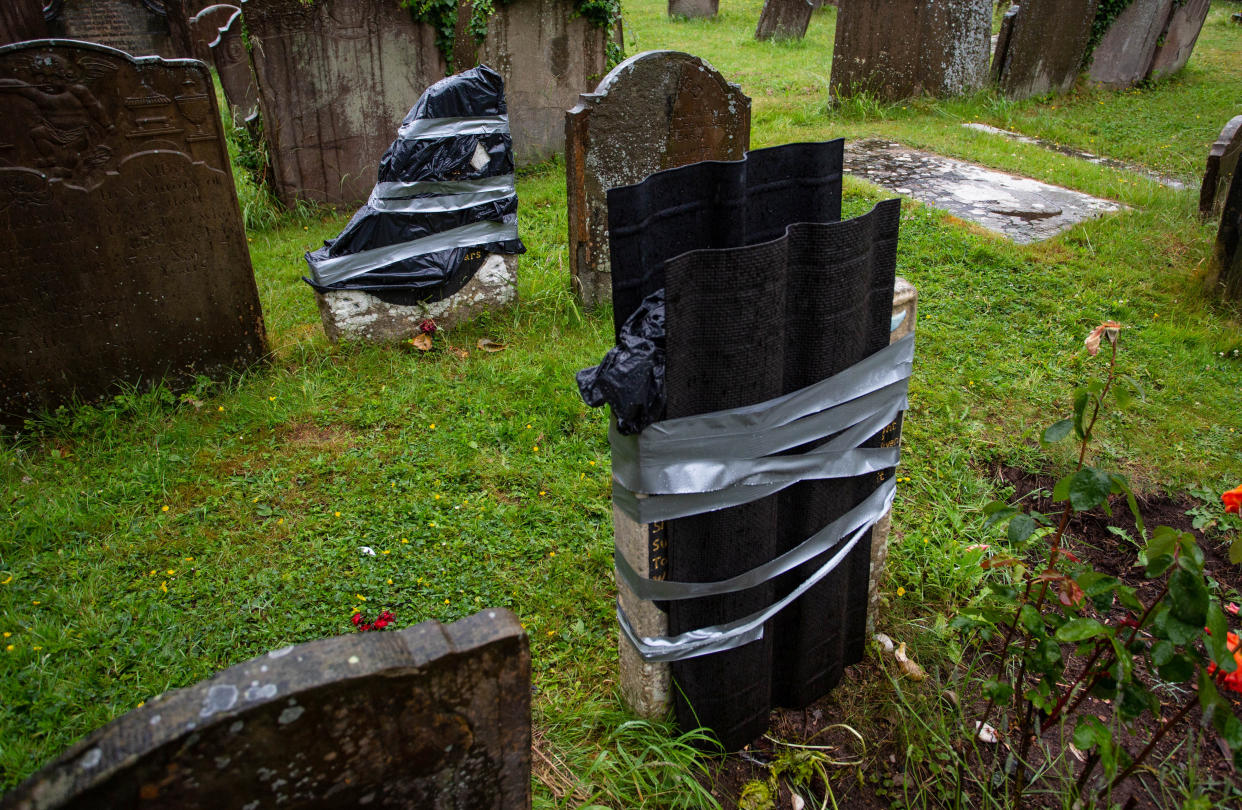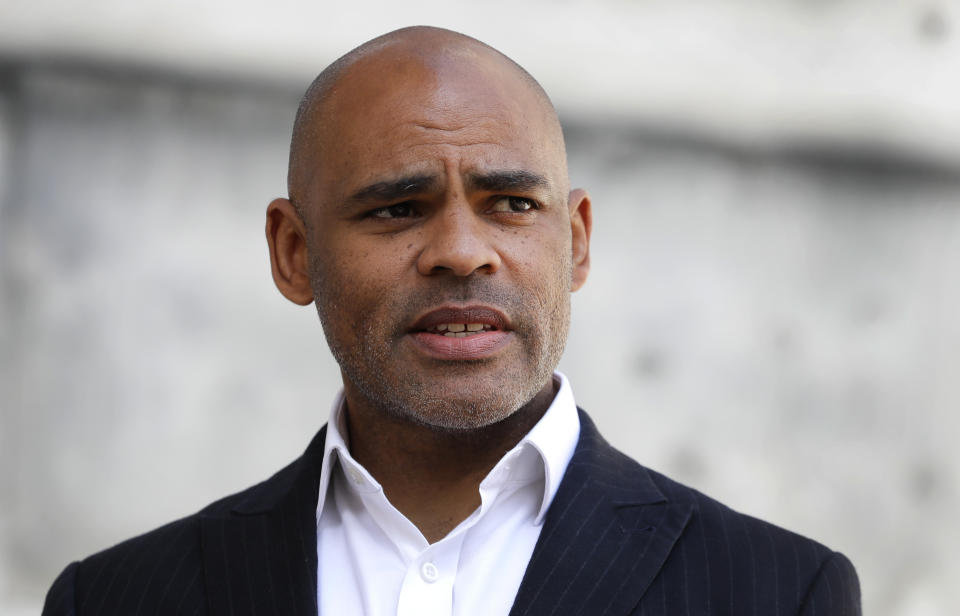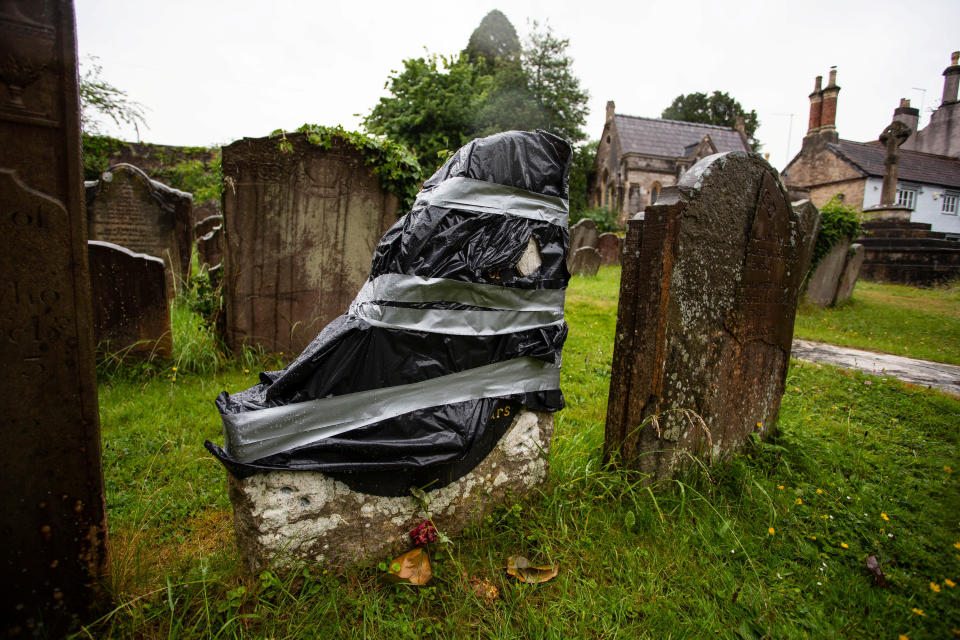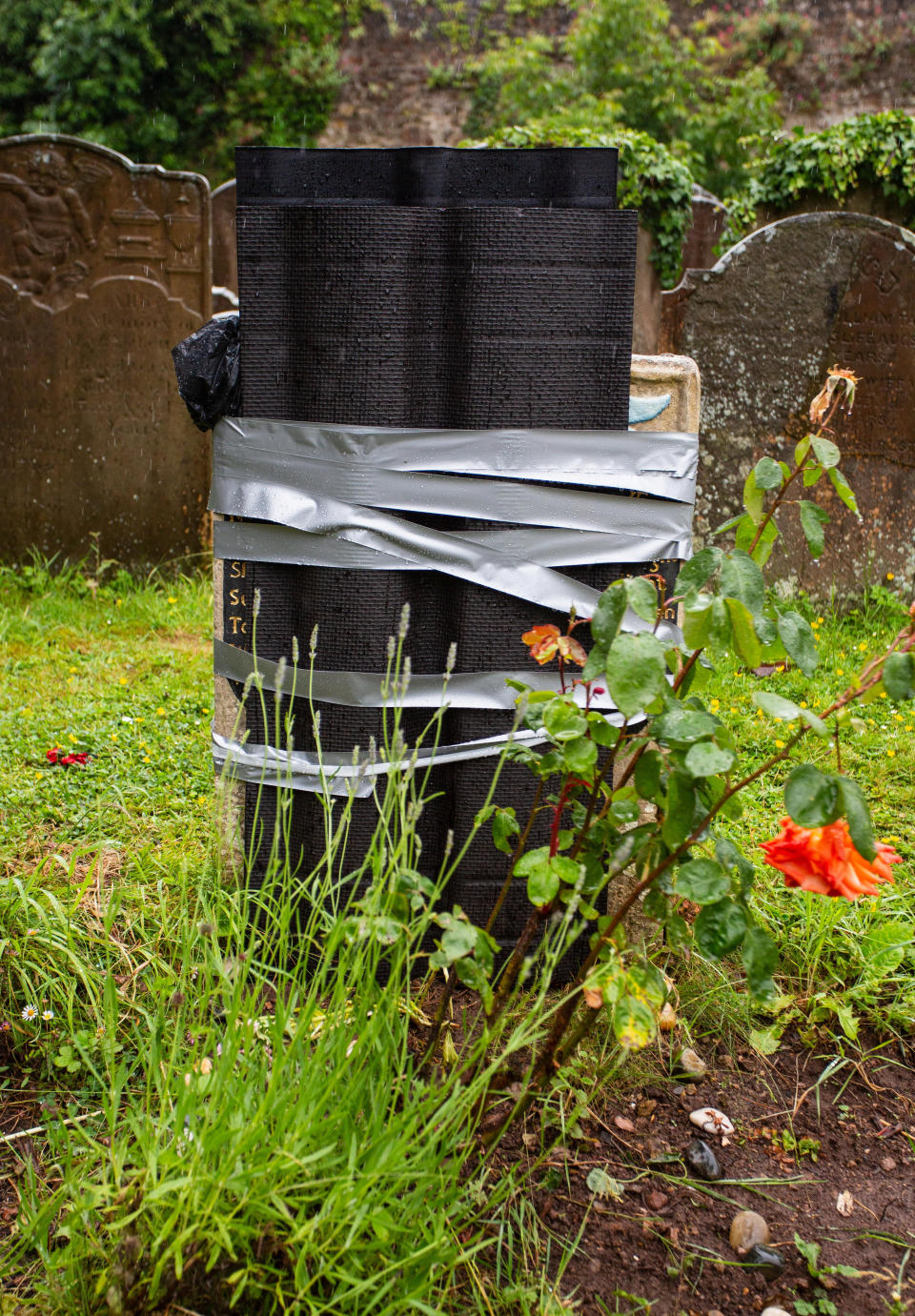Enslaved African man's historic grave damaged as Bristol mayor urges against 'tit-for-tat' attacks

The mayor of Bristol has called for restraint on “tit-for-tat” attacks after a memorial to an 18th-century African man was damaged.
The vandalism follows the tearing down of 17th-century slave trader Edward Colston, which was dropped into Bristol harbour during an anti-racism demonstration.
In a Facebook video, mayor Marvin Rees said he had been told the Grade II* listed memorial to Scipio Africanus had been attacked.
He said Africanus was “an enslaved African who lived in Bristol” and the grave is “an iconic piece of Bristol’s history and that has been smashed in two, with a message left scrawled on the floor”.


He said he did not want the city to get into “tit-for-tat” attacks and Bristol should instead demonstrate that it can live with difference.
Conservative councillor Mark Weston said: “This looks like a retaliation attack for the recent events involving the Colston statue.
“I am deeply saddened by what is happening. We have seen war memorials defaced and statues vandalised and I have to wonder where this will end.”
Labour’s Rees previously said that being of “Jamaican heritage... I cannot pretend that I have any real sense of loss for the (Colston) statue” but “cannot condone the damage”.
Historic England said most of the information on Africanus comes from his tomb, which says he died in 1720 having at some point served the Earl of Suffolk, Charles William Howard, at Henbury near Bristol.
Black servants are difficult to trace through Bristol history, but the grave of Scipio Africanaus is a rare monument to one. It stands in Henbury chruchyard. #AHouseThroughTime https://t.co/sSLXMTZj9M pic.twitter.com/GYuKiCKezl
— KYPBristol (@KYPBristol) May 26, 2020

It is not known how he came to serve the earl, Historic England said, but he may have been a so-called “favoured slave” on an overseas plantation who won the nobleman’s favour.
The tomb shows “unusual richness of invention in its charming design and poetic inscription”, and “such graves are rare”, the organisation added.
His name appears to come from a famous Roman general, who is said to have shown captured enemies they could earn their freedom if they showed goodwill to their conquerors, Historic England said.
It was common for slaves to be given Roman names.
The grave is in St Mary’s churchyard in Bristol.
A spokesman for Avon and Somerset Police said: “We have received a report of criminal damage to a monument at Henbury Parish Church.
“We believe the incident occurred between 12pm on Tuesday 16 June and 8am on Wednesday 17 June.
“Our investigation into what happened is at an early stage. Officers have been at the scene and have carried out house-to-house and CCTV enquiries.
“Anyone with information is asked to call 101 and give reference number 5220132067.”
The statue of Colston, who invested in the city but made much of his fortune from the slave trade, is to be put in a museum.
His name appears on a number of places in Bristol, some of which are reviewing whether to retain it or committed to removing it altogether.

 Yahoo News
Yahoo News 
